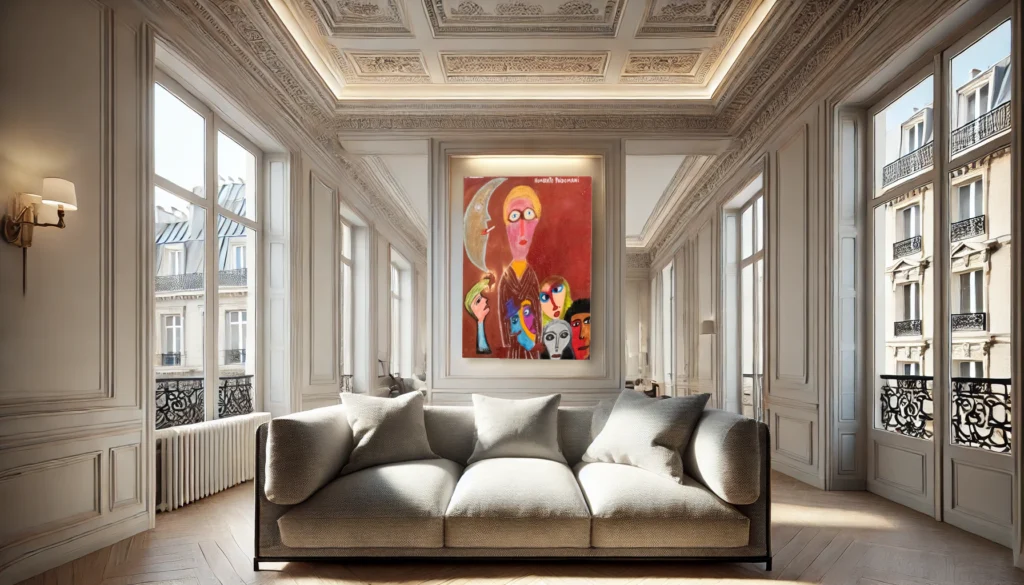
Art Investments: A Comprehensive Guide to Investing in Art
Diversification and Risk Management
Diversification is crucial in art investment, as it helps manage risk and reduce exposure to any single artist or style. Investing in different artists, styles, or periods can help balance a portfolio and mitigate potential losses.
Example: A well-diversified art portfolio might include works from established and emerging artists and pieces from various art movements and geographic regions.
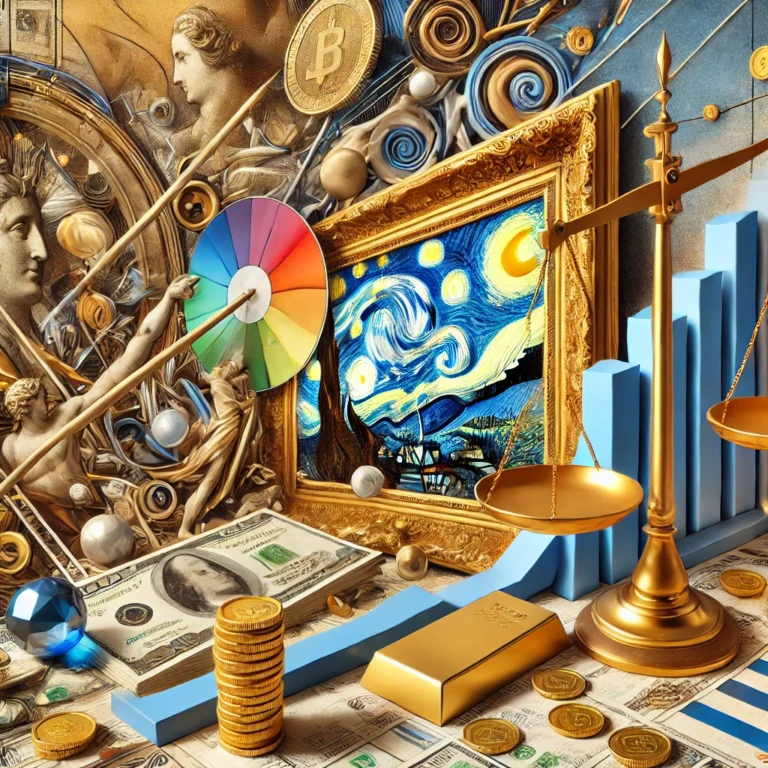
Art Investment involves purchasing artworks with the expectation that their value will appreciate over time, providing financial returns when sold. Unlike traditional investments, art carries intrinsic aesthetic and cultural value, adding a unique dimension to this asset class. Over the years, art has evolved as a significant alternative investment avenue, appealing to investors who seek diversification, potential returns, and personal enjoyment.
This comprehensive guide explores various facets of art investment, from understanding how it works to analyzing market trends, assessing risks, and developing effective investment strategies. Whether you are a seasoned collector or a beginner, this guide will equip you with the knowledge to navigate the fascinating art investment world.
How Does Art Investment Work?
Art investment is not just about purchasing a painting or sculpture; it's about selecting pieces likely to appreciate over time, potentially offering high returns. Investors typically focus on several factors:
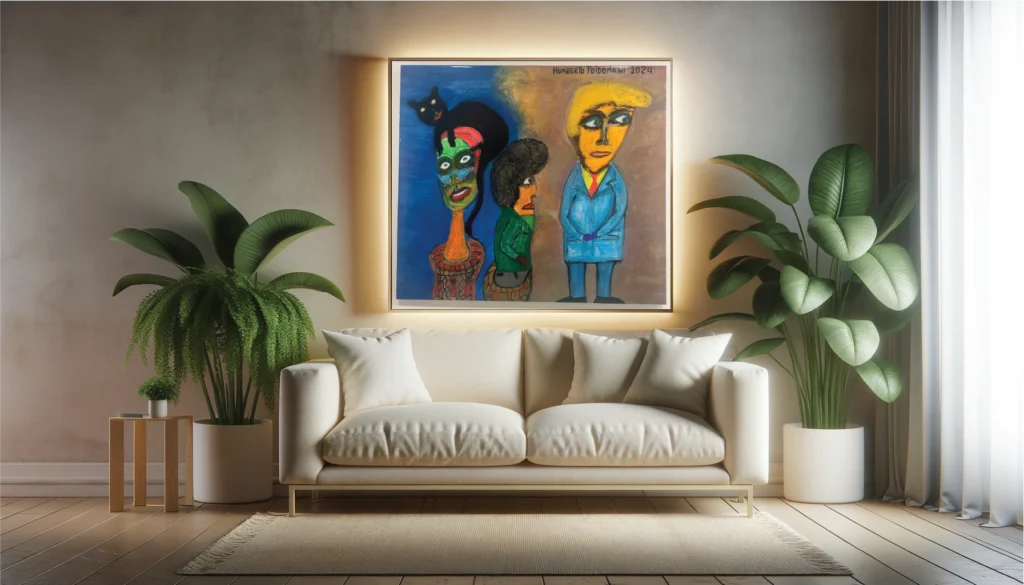
Artist Reputation: Collectors often consider works by established artists to be safer investments because these artists have a proven track record of holding or increasing value. Emerging artists, however, can offer high returns if they gain popularity and recognition.
Rarity and Uniqueness: Rare and unique pieces have higher investment potential. Collectors often seek limited editions, one-of-a-kind artworks, or pieces from a significant period of an artist’s career.
Market Trends: Understanding current trends in the art market is crucial. Some styles or periods may be in vogue, increasing demand and prices. Staying informed about what’s popular or expected to rise in value can guide investment decisions.
Historical Significance: Artworks with historical importance or that are part of significant collections can carry higher value. This value often increases when renowned galleries or museums exhibit the work.
In terms of potential returns and risks, investing in art can be compared to investing in real estate or stocks. For instance, like real estate, the value of art can appreciate over time, and like stocks, the art market can experience periods of high demand and price increases. However, it is essential to understand that art does not provide income (like dividends or rent); its value is realized only upon sale.
Example: A collector purchasing a painting by a lesser-known artist for a modest price may find the value of that piece soaring if the artist gains fame. Conversely, works by famous artists like Picasso or Warhol are generally stable but can still fluctuate based on market conditions.
The Role of Art Indexes in Tracking Performance
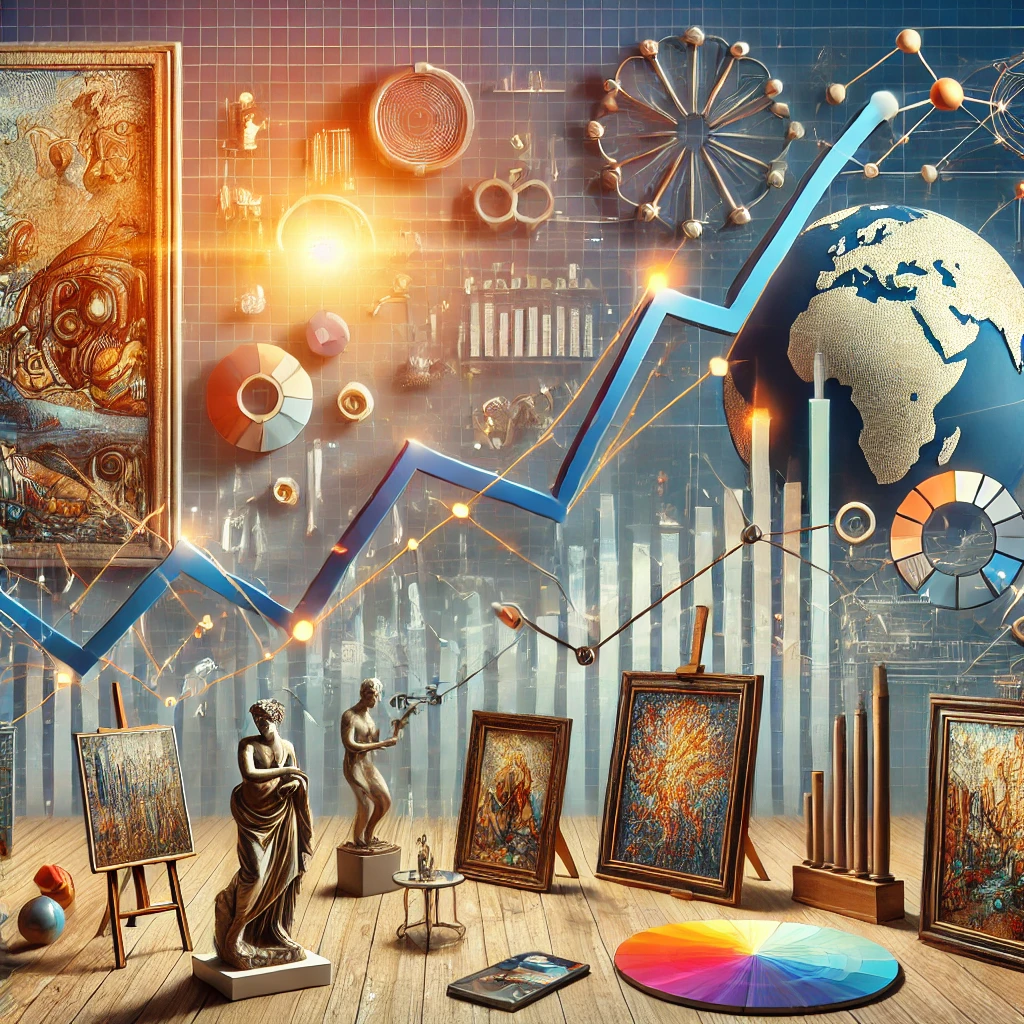
Art indexes are valuable tools for tracking the performance of the art market, helping investors understand the overall trends and volatility. Several indexes offer insights into different segments of the art market:
The Art Market Research (AMR) Index: This index tracks prices across various art categories, such as Old Masters, Contemporary Art, and others. Collectors and investors widely use it to understand price movements and compare art forms.
Mei Moses Art Indices: Acquired by Sotheby’s, this index is based on repeat sales of artworks, providing a reliable measure of price changes over time. It covers various segments, from Post-War and Contemporary Art to Impressionist works.
Artnet Price Database: This extensive database provides data on auction prices, helping investors analyze trends, make comparisons, and make informed decisions.
Indexes like these offer a way to gauge the art market’s health, much like stock market indexes do for equities. They give investors a clear picture of the market’s dynamics, including its ups and downs, helping them make informed decisions and feel confident about their investments.
Example: During the economic downturn of 2008, many art indexes showed significant drops, reflecting the decrease in art prices as collectors tightened their budgets. Conversely, certain art segments have shown impressive growth during economic booms, especially in contemporary and modern art markets.

The Global Art Market: A Comparative Analysis
Understanding the global art market is crucial for any art investor. It’s diverse and multifaceted, with different regions exhibiting unique characteristics and trends. Here’s a comparative analysis of some significant art markets to help you feel knowledgeable and prepared:
United States Art Market
The US art market is the largest and most influential globally, often leading in sales volume and value. Major cities like New York are home to renowned auction houses, galleries, and art fairs that attract collectors worldwide. The US market is diverse, with a strong presence of contemporary and modern art and works from various periods.
- Key Factors include the dominance of major auction houses like Sotheby’s and Christie’s, a robust economy, and a culture that values art and investment.
- Trends: There is a growing interest in digital and NFT art, increased online sales, and a strong market for blue-chip artists.
European Art Market
The European art market has a rich history, with cities like London, Paris, and Berlin serving as major hubs. The market is known for emphasizing classical, modern, and contemporary art. The impact of the European Union and Brexit has also shaped the market dynamics, affecting regulations, tax policies, and cross-border transactions. For instance, Brexit has led to changes in the VAT rules for art sales, potentially affecting the cost of buying and selling art in the UK and Europe.
- Key Factors include historical significance, a strong tradition of art collection, and major art fairs like Art Basel.
- Trends: The market continues to focus on classical art and Old Masters while also seeing a burgeoning interest in contemporary art and emerging artists.
Asian Art Market
The Asian art market, particularly in China and Hong Kong, has grown rapidly over the past few decades. This market is driven by economic growth, increasing wealth, and a solid cultural appreciation for art. While the market for traditional Chinese art remains strong, there is also a growing interest in contemporary and modern art.
- Key Factors: Economic growth drives the market, with government support and a growing middle-class interest in art contributing significantly.
- Trends: Contemporary and modern art is becoming more popular, the market for NFTs is growing, and there are an increasing number of high-net-worth collectors.
Middle Eastern Art Market
The Middle Eastern art market is emerging, with cities like Dubai becoming important art hubs. The market features traditional and contemporary art, reflecting the region’s rich cultural heritage and modern influences.
- Key Factors include government initiatives to promote art, a growing number of art collectors, and international art fairs.
- Trends: The market focuses on modern and contemporary art, shows a growing interest in digital art, and sees increased collaboration with Western art markets.
Example: The US art market’s resilience during economic downturns contrasts with the rapid growth and volatility seen in the Asian market, demonstrating the diverse dynamics of global art markets.
Financial Market Influence on Art Price Evolution
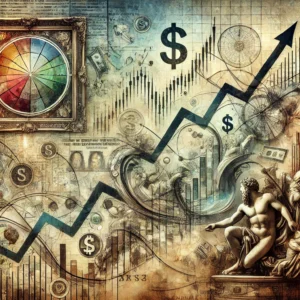
Art prices do not remain immune to the broader financial markets and experience influence from several factors:
Economic Cycles and Art Prices
During economic booms, art prices rise because collectors and investors have more disposable income for luxury items. Conversely, art prices can stagnate or decline during recessions as people prioritize essential expenses over discretionary purchases like art.
Case Study: The 2008 financial crisis led to a significant drop in art prices and sales volume, as many collectors and investors faced financial uncertainty. However, some segments, like contemporary art, showed resilience and recovered quickly.
Wealth Creation and Art Investment
A surge in wealth, especially among high-net-worth individuals, often leads to increased demand for art. This is particularly true in regions experiencing rapid economic growth, such as Asia and the Middle East.
Example: China’s rapid economic growth has led to a burgeoning class of wealthy individuals interested in art investment, driving up prices and demand in the region.
Currency Fluctuations and International Buyers
Changes in currency value can impact art prices, especially for international buyers and sellers. A strong currency can make art more affordable for foreign buyers, while a weak currency can deter international transactions.
Example: The weakening of the British pound post-Brexit made artworks in the UK more attractive to foreign buyers, leading to a surge in international sales.
Interest Rates and Alternative Investments
Low interest rates make alternative investments like art more attractive, offering better returns than traditional financial instruments like bonds.
Example: During periods of low interest rates, many investors turn to the art market to diversify their portfolios and seek higher returns.
Critical Events Shaping the Art Market
Several critical events have shaped the art market, influencing its growth and development:
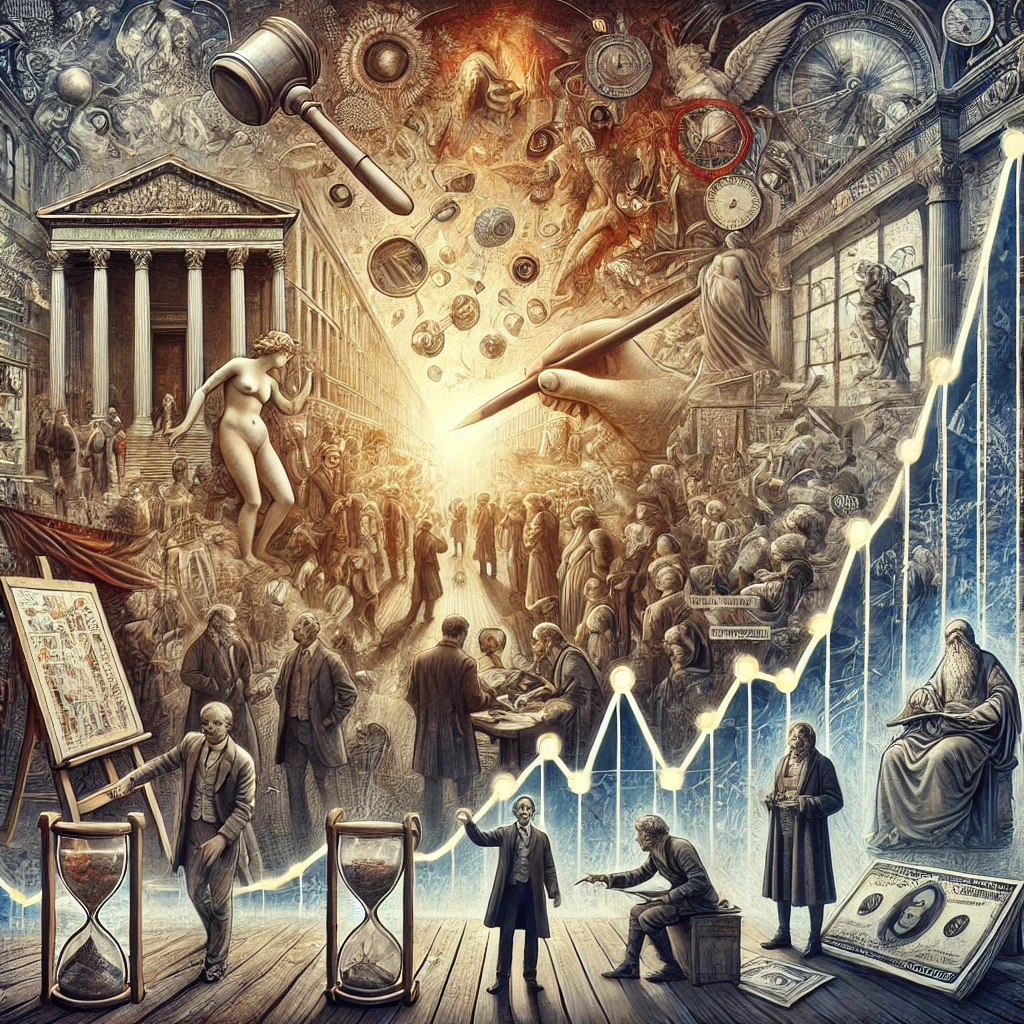
Historical Milestones
Significant events, such as the rise of modern art movements, have played a crucial role in shaping the art market. For example, the emergence of Impressionism in the late 19th century revolutionized the art world and laid the foundation for modern art.
Example: The introduction of contemporary art movements, such as Abstract Expressionism and Pop Art, in the mid-20th century, created new markets and attracted a new generation of collectors and investors.
Technological Advancements
The advent of online platforms and digital technologies has revolutionized the art market, making it more accessible to a global audience. Online auction houses and sales platforms have democratized art investment, allowing collectors to purchase and sell art from anywhere in the world.
Example: The rise of platforms like Artsy and Artnet has made it easier for collectors to access information, compare prices, and make informed investment decisions.
Pandemics and Global Crises
The COVID-19 pandemic initially disrupted the art market due to lockdowns and canceled auctions. However, it also led to a rapid adaptation to online sales, which ultimately expanded the market and introduced new buyers to the art world.
Example: The shift to online auctions during the pandemic allowed auction houses to reach a broader audience, resulting in record-breaking sales and increased interest in digital art.
Evaluating the Financial Strengths of Art Investments
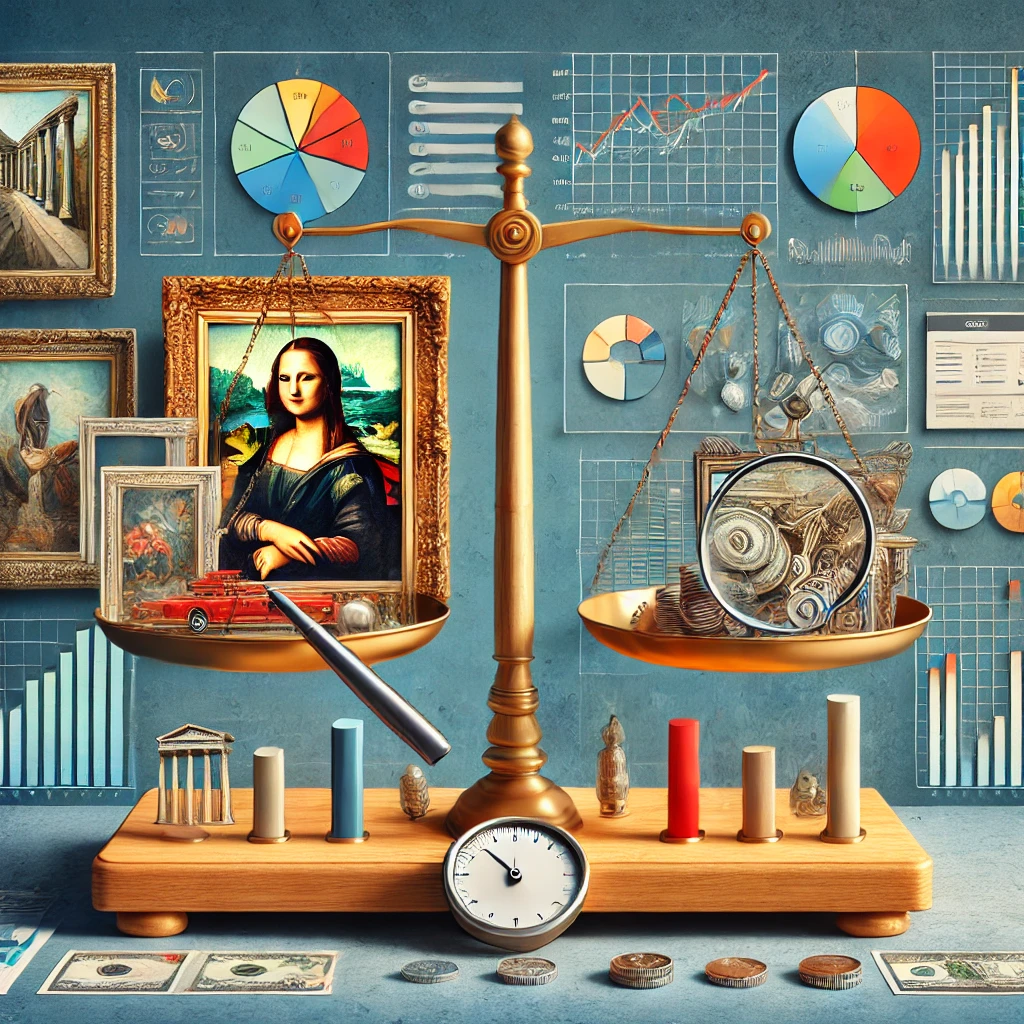
When evaluating the financial strengths of art investments, several criteria should be considered:
Artist’s Reputation and Market Perception
An artist’s reputation plays a significant role in determining the value of their artwork. Established artists with a strong track record tend to have more stable prices, while emerging artists may offer higher returns if their popularity increases.
Case Study: The works of established artists like Pablo Picasso and Claude Monet have consistently performed well at auctions, while contemporary artists like Banksy have seen a surge in demand and prices.
Provenance and Authenticity
The history of ownership, or provenance, can significantly affect an artwork’s value. Pieces with clear, reputable provenance are often more valuable as they assure authenticity and quality.
Example: Artworks with a well-documented provenance, such as those that have been exhibited in major museums or owned by notable collectors, often fetch higher prices at auction.
Condition and Rarity
Artworks in excellent condition and verified authenticity are crucial for maintaining and appreciating value. Unique or rare pieces from high-demand artists often have higher investment potential.
Example: A rare painting by a renowned artist in pristine condition will likely command a higher price than a similar work in poor condition or with questionable authenticity.
Market Trends and Demand
Keeping abreast of art market trends and understanding which styles or artists are gaining popularity can guide investment decisions. Investors should consider factors such as current market demand, upcoming exhibitions, and the potential for future appreciation.
Example: The growing interest in contemporary and digital art has led to increased demand for works by artists like Yayoi Kusama and Beeple, whose pieces have appreciated significantly in recent years.
Blue-Chip Art: The Safe Bet in Art Investment
Blue-chip art refers to artworks by well-established, reputable artists whose works have a history of performing well at auctions and appreciating over time. Many investors consider blue-chip art a safer investment because these artists have a proven track record, making their work more resilient to market fluctuations.
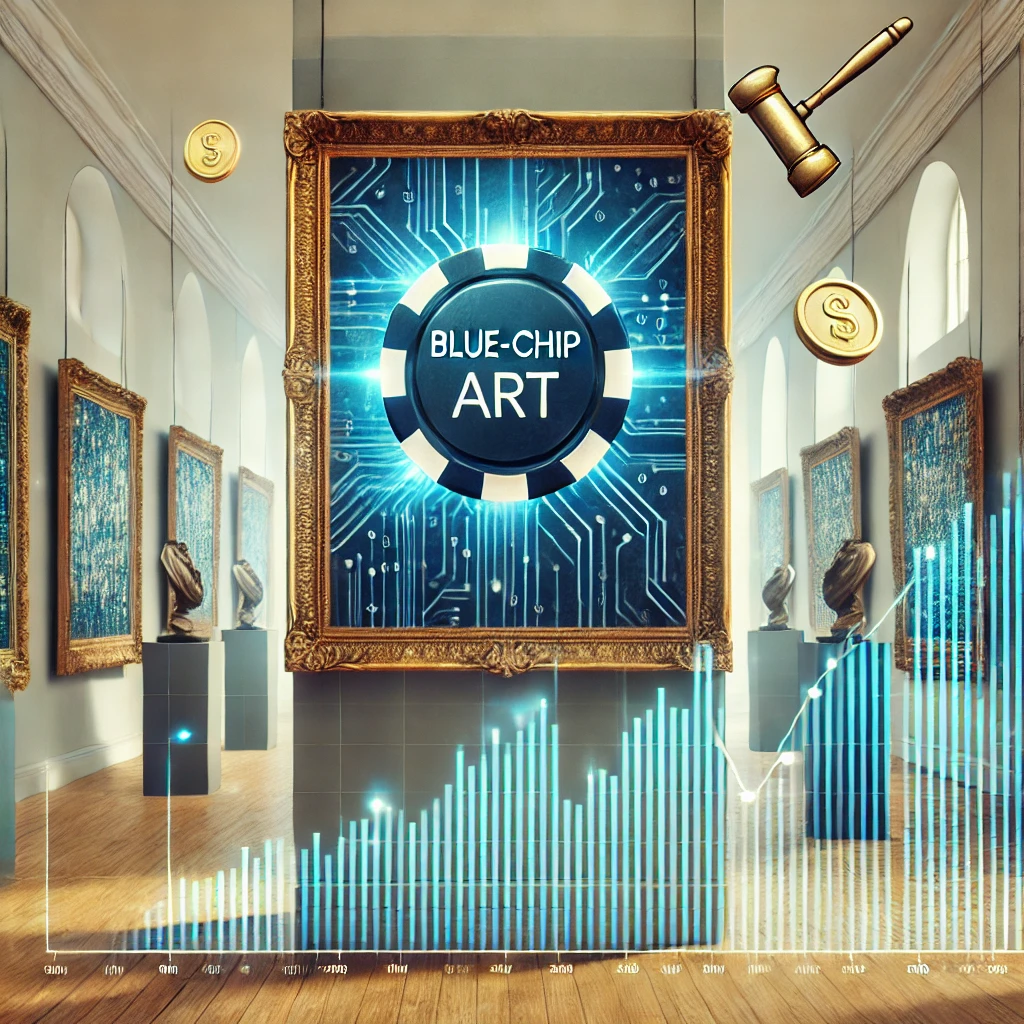
Definition of Blue-Chip Art
Blue-chip art typically includes works by renowned artists who have achieved significant recognition and success in the art world. These artists often have a long history of exhibitions, critical acclaim, and strong secondary market performance.
Examples: Artists such as Pablo Picasso, Andy Warhol, and Jean-Michel Basquiat are considered blue-chip artists due to their lasting impact on the art world and consistent market demand.
Long-Term Stability and Market Performance
Blue-chip art is known for its long-term stability and market performance, making it an attractive option for conservative investors. While the prices of blue-chip artworks may fluctuate, they tend to retain or increase in value over time.
Case Study: During economic downturns, blue-chip art is more resilient than other asset classes. Works by artists like Claude Monet and Jackson Pollock have maintained their value even during market volatility.
Risks and Rewards
Investing in blue-chip art offers several benefits, including lower risk and the potential for long-term appreciation. However, it also comes with certain risks, such as high entry costs and limited upside potential compared to emerging artists.
Example: While blue-chip art can provide a stable investment, the high cost of entry may limit accessibility for some investors. Additionally, the potential for substantial returns may be lower than investing in emerging artists whose works could be appreciated rapidly.
The Role of Volatility in Art Investment Markets
Volatility plays a significant role in the art market, influencing prices and investment decisions. Several factors contribute to volatility in the art market:
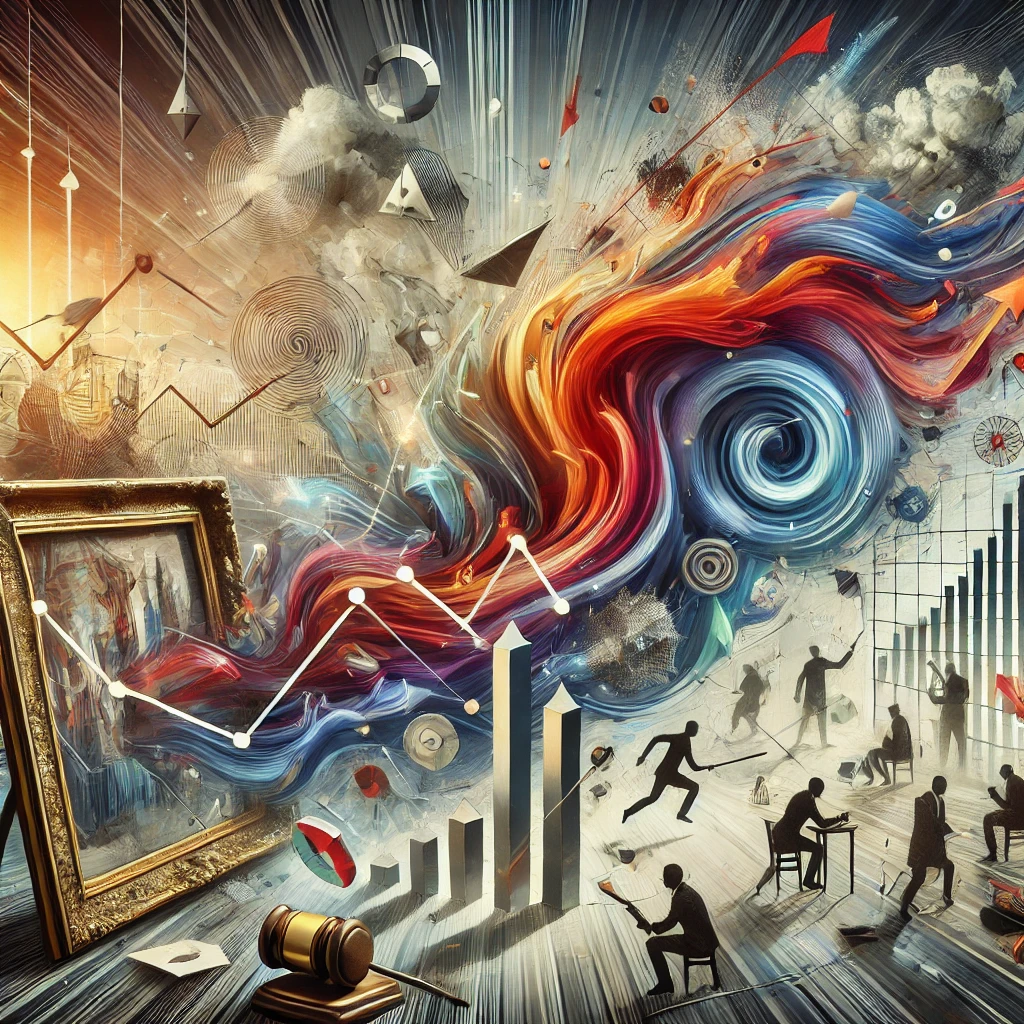
Market Sentiment and Changing Tastes
The art market is heavily influenced by changing tastes and market sentiment. Artists who are in vogue today may fall out of favor tomorrow, affecting the prices of their works.
Case Study: The popularity of Impressionist art surged in the late 19th century but declined in the early 20th century as modern art movements like Cubism and Abstract Expressionism gained prominence.
Economic Conditions and Market Stability
Economic stability or instability can lead to significant price fluctuations in the art market. During periods of financial uncertainty, collectors may be less willing to invest in art, leading to lower prices and reduced market activity.
Example: The art market experienced a downturn during the 2008 financial crisis, with many collectors opting to hold onto their assets rather than sell at a loss.
Auction Sales and Market Perception
High-profile auction sales or failures can significantly impact market perceptions and prices. Record-breaking sales can boost market confidence and drive up prices, while unsuccessful auctions can lead to a decline in demand and lower prices.
Example: The sale of Leonardo da Vinci’s “Salvator Mundi” for $450 million in 2017 set a new record for the highest price ever paid for an artwork, boosting market confidence and attracting new buyers to the art market.
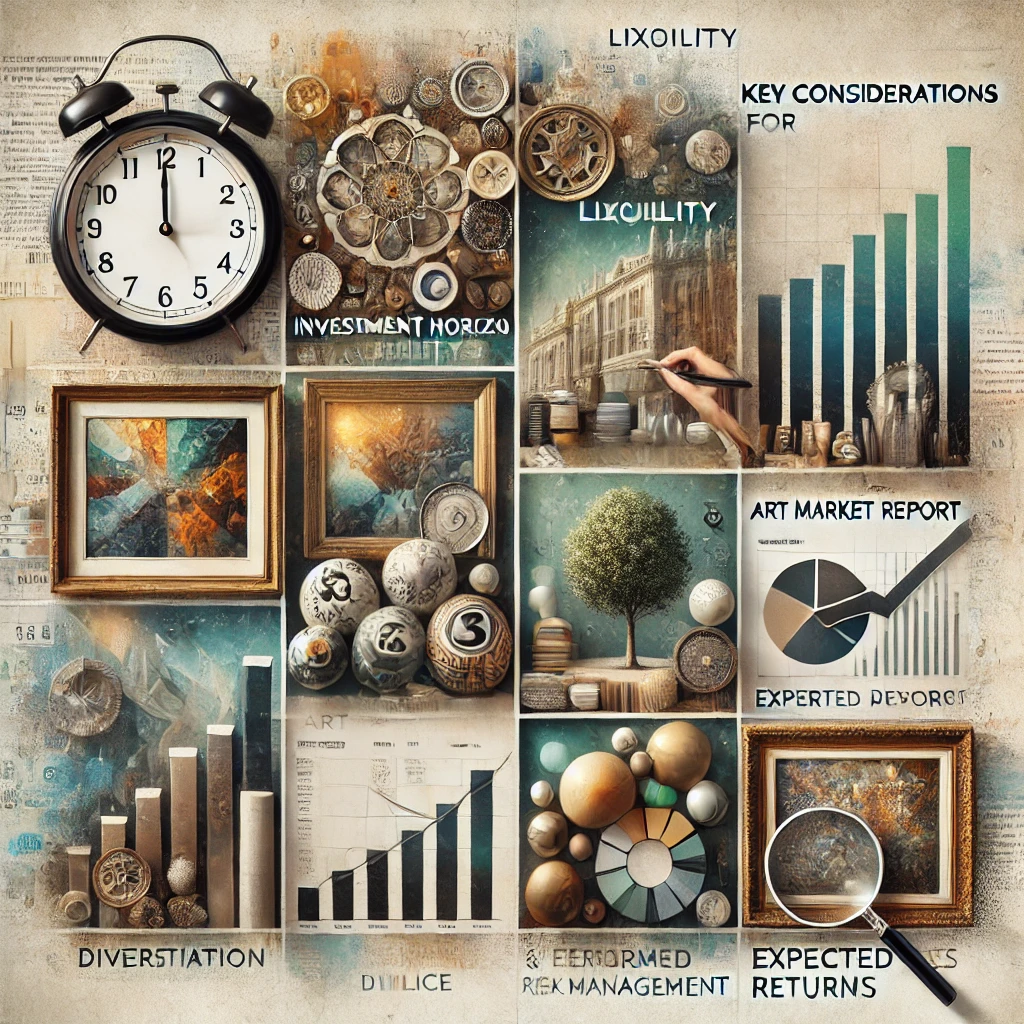
Parameters to Consider Before Investing in Art
Before investing in art, investors should consider several vital parameters to make informed decisions.
Investment Horizon and Liquidity
Art is typically a long-term investment, and returns may take years or even decades to materialize. Unlike stocks or bonds, art is less liquid, meaning it may take time to sell and convert a piece into cash.
Example: A collector may hold onto a painting for several years, waiting for the right market conditions to sell and maximize returns. However, the process of selling art can be time-consuming and may involve significant transaction costs.
Diversification and Risk Management
Diversification is crucial in art investment, as it helps manage risk and reduce exposure to any single artist or style. Investing in different artists, styles, or periods can help balance a portfolio and mitigate potential losses.
Example: A well-diversified art portfolio might include works from established and emerging artists and pieces from various art movements and geographic regions.
Expert Advice and Market Research
Consulting with art advisors, attending auctions, and conducting thorough research can provide valuable insights into the art market and help investors make informed decisions.
Example: An art advisor can guide market trends, artist reputations, and potential investment opportunities, helping investors navigate the complex art market.
Expected Returns and Performance Benchmarks
Returns on art investments vary widely, depending on factors such as the artist, style, period, and market conditions. Historically, average returns on art have been comparable to or slightly below equity markets, but this varies greatly depending on the specific piece and timing of purchase and sale.
Example: While some artworks may appreciate significantly over time, others may not. Investors should have realistic expectations and prepare for both gains and losses
Art as an Alternative Investment Class
Art is increasingly being recognized as an alternative investment class, offering unique benefits and challenges compared to traditional investments like stocks, bonds, and real estate.
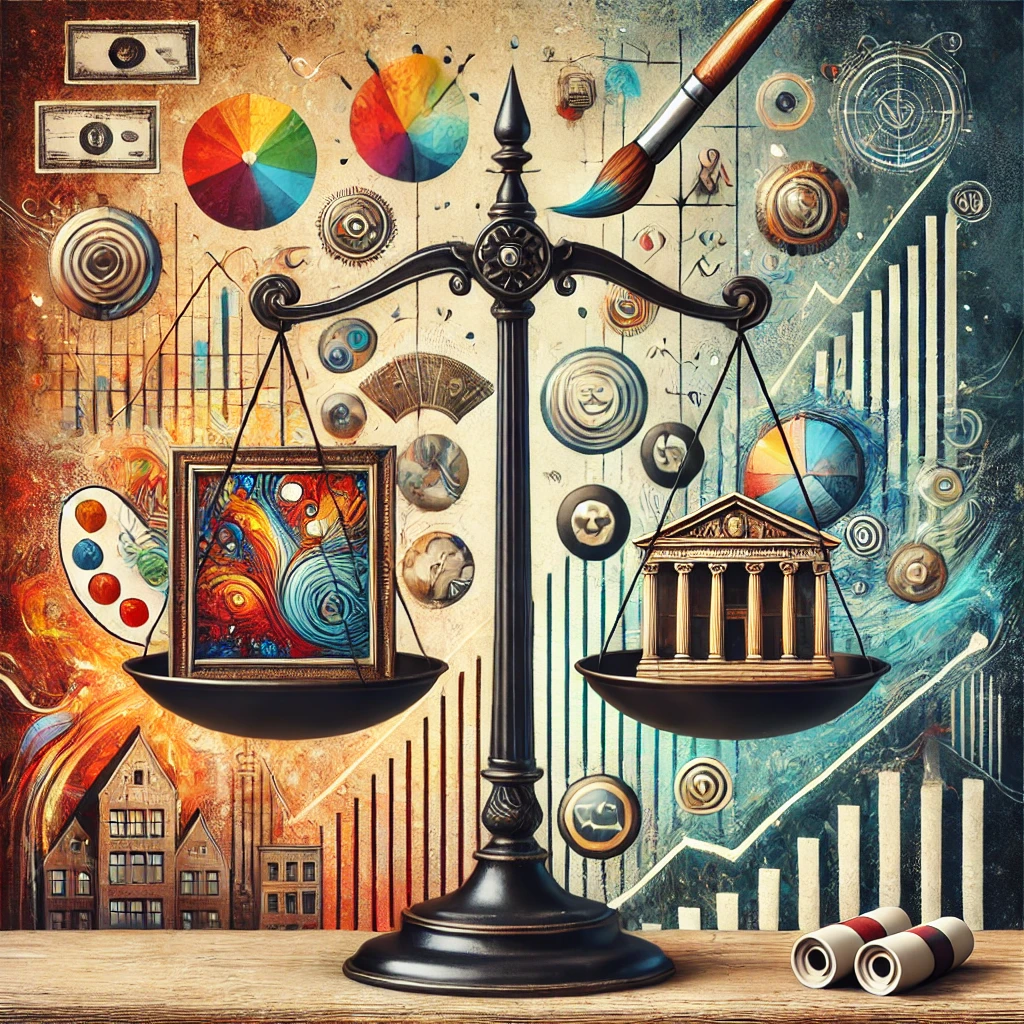
Art vs. Traditional Investments
Art investments differ from traditional investments in several key ways:
- Non-Correlation: Art often does not correlate with traditional financial markets, making it a valuable diversification tool in an investment portfolio.
- Tangible Asset: Unlike stocks or bonds, art is a tangible asset that investors can enjoy and display, adding an aesthetic dimension to the investment.
- Potential for Appreciation: Art does not provide income like dividends or rent, but it can appreciate significantly over time, especially if the artist gains recognition or the piece becomes historically significant.
Example: A collector who invested in contemporary art in the early 2000s may have seen its value substantially appreciated, especially if they acquired works by artists who later gained prominence.
Emerging Art Investments
Emerging art investments offer opportunities for investors to capitalize on new trends and artists. Contemporary, digital, and emerging art markets are gaining traction, providing fresh investment opportunities.
Example: The rise of digital art and NFTs has created a new market for collectors and investors, with digital artworks fetching record prices at auction.
Art as a Financial Asset
In wealth management and estate planning, art provides a unique asset that people can transmit through generations. Additionally, investors use art to diversify a financial portfolio, reducing overall risk and enhancing returns.
Example: High-net-worth individuals often include art in their investment portfolios as a way to diversify assets and reduce exposure to traditional financial markets.
Art Investment Strategies and Tips
Developing effective strategies and tips for art investment can help maximize returns and manage risk:
For Beginners: Getting Started with Art Investment
New art investors should take the following steps to get started:
- Research the Market: Learn about different art movements, styles, and artists to understand the market and identify potential investment opportunities.
- Set a Budget: Determine how much you are willing to invest in art and set a budget to guide your purchases.
- Start Small: Begin with smaller, less expensive pieces to gain experience and build confidence in your investment decisions.
Example: A beginner investor might start by purchasing a few works by emerging artists at local galleries or online platforms, gradually expanding their collection as they gain knowledge and experience.
Advanced Strategies for Experienced Investors
Experienced investors can employ more advanced strategies to maximize returns:
- Focus on Blue-Chip Artists: Invest in works by established artists with a strong track record of market performance.
- Diversify Across Art Movements and Regions: Spread investments across different art movements, styles, and geographic regions to manage risk and enhance returns.
- Leverage Art Funds and Advisors: Utilize art investment funds and consult with advisors to access exclusive opportunities and gain expert insights.
Example: An experienced investor might diversify their portfolio by acquiring works from both established and emerging artists, spanning various art movements and regions.
Art Investment Risks and How to Mitigate Them
Like any investment, art comes with its own set of risks. Understanding these risks and how to mitigate them is crucial for successful art investment:
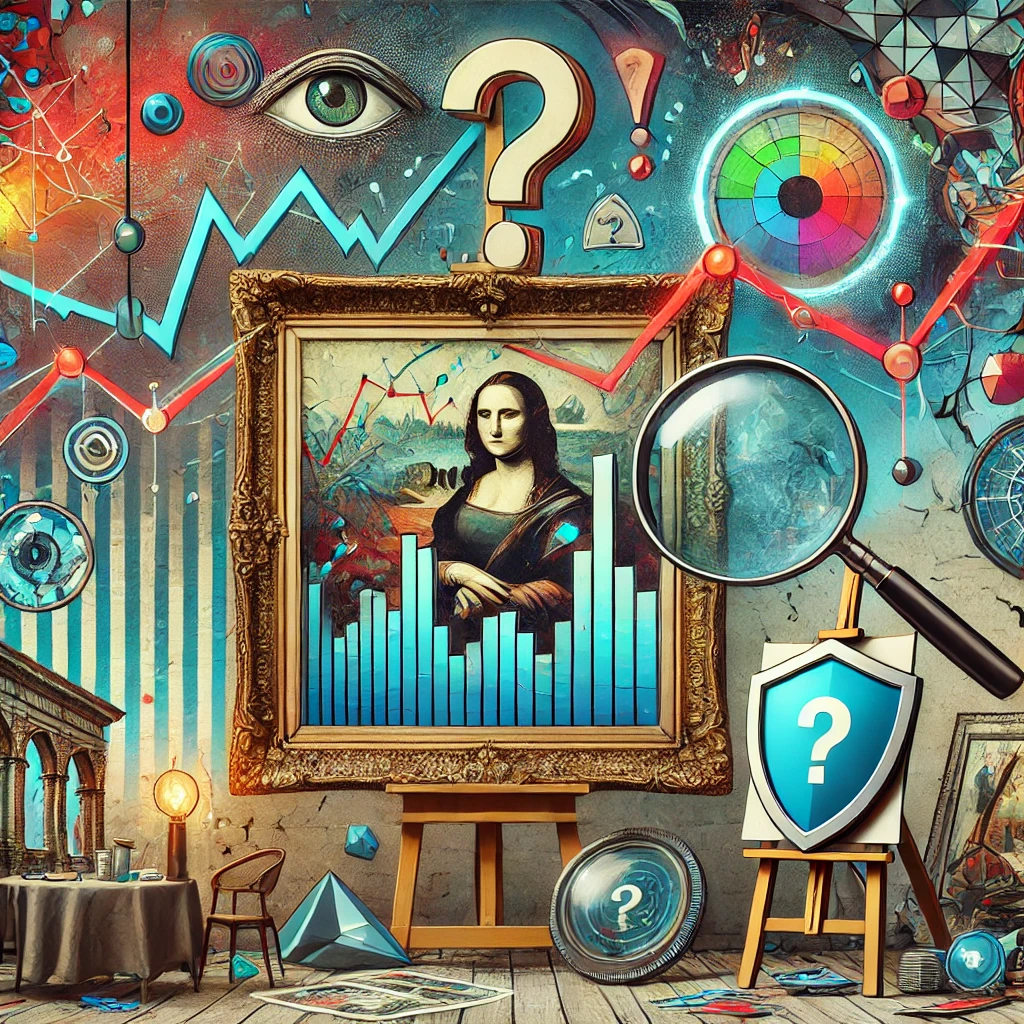
Identifying Potential Risks
Common risks associated with art investments include:
- Market Volatility: The art market can be volatile, with prices fluctuating based on factors such as economic conditions, market sentiment, and changing tastes.
- Lack of Liquidity: Art is less liquid than other assets, making it harder to sell if needed.
- Forgery and Fraud: Investors’ risk of purchasing forged or fraudulent artworks is a significant concern.
Example: An investor who purchases a work by a lesser-known artist may need help if the artist’s popularity wanes or people question the artwork’s authenticity.
Mitigation Strategies
Several strategies can help minimize risks in art investment:
- Conduct Due Diligence: Thoroughly research artists, galleries, and auction houses before purchasing to ensure authenticity and quality.
- Diversify Investments: Spread investments across different artists, styles, and periods to reduce exposure to any market segment.
- Consult Experts: Work with art advisors, appraisers, and legal professionals to navigate the complexities of the art market and avoid potential pitfalls.
Example: By conducting due diligence and consulting with experts, an investor can reduce the risk of purchasing a forged artwork or overpaying for a piece with limited investment potential.
Legal and Ethical Considerations
Navigating the legal landscape of art investment and addressing ethical considerations is essential for responsible collecting and investing:
- Understand Legal Obligations: Be aware of laws and regulations related to art transactions, including import/export restrictions, taxes, and provenance requirements.
- Consider Ethical Issues: Consider ethical considerations, such as the source of the artwork and the potential impact of its sale on cultural heritage.
Example: An investor who purchases an artwork with questionable provenance may face legal challenges and ethical dilemmas if they later discover the piece was looted or stolen.
The Future of Art Investment: Trends and Predictions
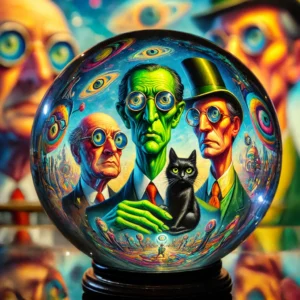
The art market is constantly evolving, with new trends and technologies shaping the future of art investment:

Digital and NFT Art
The rise of digital art and non-fungible tokens (NFTs) has revolutionized the art market, offering new opportunities for collectors and investors:
- Blockchain Technology: NFTs are built on blockchain technology, providing a secure and transparent way to buy, sell, and trade digital art.
- Growing Popularity: Digital art and NFTs have gained significant traction recently, with high-profile sales and increasing interest from collectors and investors.
Example: Beeple’s digital artwork “Everyday: The First 5000 Days” was sold for $69 million at Christie’s in 2021, marking a turning point for the NFT market. It attracted widespread attention and sparked debate about the future of digital art.
Sustainability and Ethical Investing
Sustainability and ethical considerations are becoming increasingly important in the art market, with collectors and investors seeking to make responsible choices:
- Eco-Friendly Art Practices: Artists and galleries are adopting sustainable practices, such as using eco-friendly materials and reducing their carbon footprint.
- Ethical Sourcing: Collectors are becoming more conscious of the moral implications of their purchases, considering factors such as provenance, cultural heritage, and the impact on local communities.
Example: An investor who prioritizes sustainability may seek out artists and galleries that adhere to eco-friendly practices and support ethical sourcing.
Globalization and Market Expansion
The art market is becoming increasingly globalized, with new opportunities and challenges emerging in different regions:
- Emerging Markets: Countries like China, India, and Brazil are becoming significant players in the global art market, offering new opportunities for collectors and investors.
- Cross-Border Transactions: The rise of online platforms and digital technologies has made cross-border transactions more accessible, allowing collectors to buy and sell art anywhere.
Example: An investor exploring emerging markets may find unique investment opportunities and access to diverse artworks unavailable in more established markets.
Висновок
art investment
Art investment offers collectors and investors a unique and rewarding opportunity, combining the potential for financial returns with the enjoyment of owning beautiful and culturally significant works of art. However, like any investment, it comes with its own set of challenges and risks. Investors can confidently navigate this complex and dynamic field by understanding the art market, conducting thorough research, and developing effective investment strategies.
Staying informed and adaptable as the art market evolves will be crucial for success. Whether a seasoned collector or a beginner, this comprehensive guide provides the knowledge and insights to make informed decisions and achieve your investment goals.
